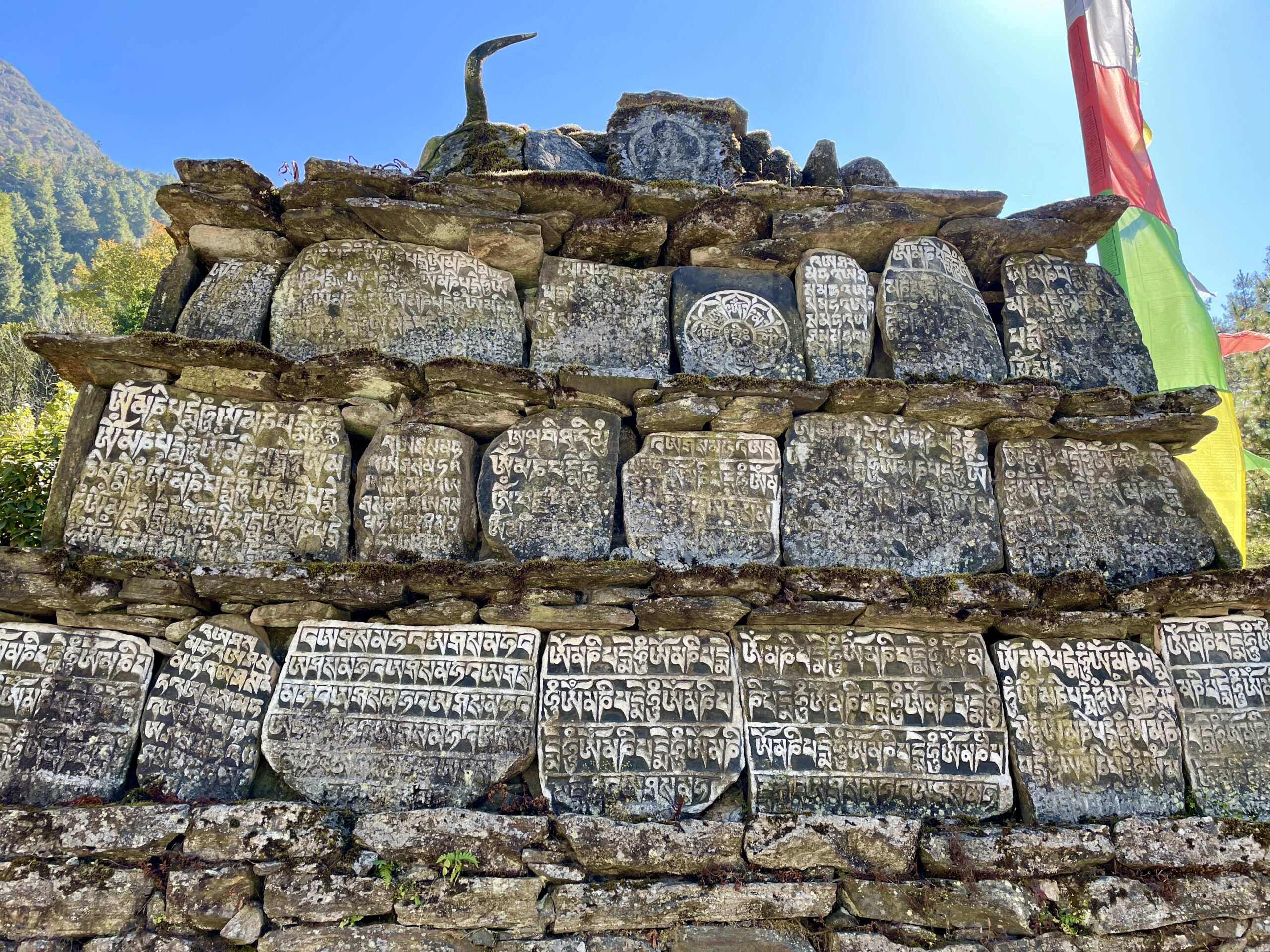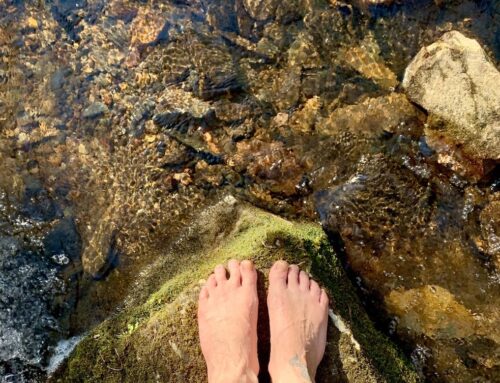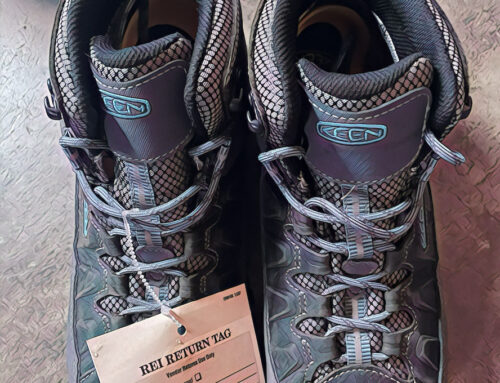Proper etiquette and observing local customs while Trekking in the Enchanted Land of Nepal
RESPECT THE LOCAL CULTURE:
As in anywhere in the world, it is important to respect the local culture when visiting new regions. The commercialization of trekking has dramatically impacted Nepal’s small villages and communities. Let us all be excellent stewards of the environment, be respectful, and ensure that our behavior and manners do not negatively impact the preservation of these ancient traditions and cultures. Here are a few guidelines to have you feeling as comfortable as a local in no time.
The Nepalis generally do not shake hands but greet each other with “Namaste.” This is putting your palms together in prayer position at your heart to witness and honor the divine in another person. “The Divine within me bows to the Divine within you.” It is also courteous to bow your head when addressing an elder. The Nepalese people, although predominantly Hindu, are comprised of those who observe numerous religions and spiritual paths. However, Namaste is a universal greeting in Nepal.
On many treks in Nepal, you will walk by Buddhist stupas, chortens, and mani stones. To respect Buddhist customs, these should be passed clockwise, representing the direction of the earth’s movement. In Buddhism, the right side is considered “pure,” so it is traditional to walk around Buddhist monuments while keeping them to your right side. (Mani stones are stones, plates, or pebbles adorned with the mantra of Avalokiteshvara, Om mani padme hum, as a form of Tibetan Buddhist prayer.)
Be considerate when entering monasteries and revered places. Refrain from wearing revealing clothing (such as off-the-shoulder tops and above-the-knee shorts or skirts) and check to see if you need to remove your shoes before entering. Ask before taking photosof people and their children. (In many places worldwide, some will ask for money in exchange for photographs.) But do talk to people and ask questions about their traditions, customs, and ancestral history. The Nepalese are some of the kindest and friendliest people on earth!
To the people in the local communities, the mountains are very sacred and remain a significant part of everyday life. Many of the names we know these grand mountains by are not their original names. Instead, they have been given names by white colonizers. The widespread removal of the cultural history of native people who lived and worshiped these mountains first is a tragic and worldwide occurrence. For example, Mount Everest was named after George Everest, a British Surveyor General of India, in 1865. However, the original name in Nepali is Sagarmāthā, which means “Holy Mother.” On the Tibet side of the mountain, it is called Chomolungma, or “Goddess Mother of the World.”
NEPALI TERMINOLOGY:
Greeting/Hello: Namaste
Thank you: Dhanyabād (pronounced: Dan-yah-bad)
Want to use terms of endearment with your new friends in Nepal? You can use these when speaking to a sibling, or you can also use these terms when talking to a friend to make them feel like part of your family. (Pronunciation in parenthesis)
•Didi: Older sister (Dee-dee)
•Dai: Older brother (Daa-i)
•Bahini: Younger sister (Ba-hee-nee)
•Bhai: Younger brother (Vaa-i)
TRAIL ETIQUETTE:
Please stay on the path and always observe the Seven Principles of Leave No Trace.Walking off-trail disturbs fragile ecosystems, damages vegetation, and contributes to erosion. Staying on the designated route ensures your safety as well as respects the local people and the land.
Treks in Nepal are usually in remote regions, so animals are often used to carry supplies up and down the mountain pathways. You will come to appreciate the sound of distant jingling bells, which means a posse of yaks or donkeys is approaching. Always move to the inside, the mountain side of the path, and let animals pass on the outside edge.
Leave No Trace Seven Principles:
Plan ahead and prepare.
Travel and camp on durable surfaces.
Dispose of waste properly.
Leave what you find.
Minimize campfire impacts.
Respect wildlife.
Be considerate of other visitors.
LOCAL ECONOMY
Nepal is still recovering from the devastating aftermath of the 2015 earthquakes that killed thousands and destroyed many homes and buildings. Trekkers and tourists are essential to restoring and rebuilding the mountain trails, hotels, and holy places. Nepal is the poorest country in all of Asia, and tourism is the most significant economic driver, trekking being the largest segment by far. By trekking in Nepal, staying in local lodgings, and eating in small restaurants, we support Nepalese business owners, families, and workers in all ways.
PLEASE DON’T HAGGLE OVER PRICES:
In local villages and markets, we can purchase goods and services. These remote regions have limited opportunities to make a living, and the underdeveloped infrastructure means supplying goods and services can be quite expensive. Thank you in advance for supporting local economies by paying a fair and reasonable rate for accommodations, meals, goods, and souvenirs.
STAYING OVERNIGHT AT THE TEAHOUSES:
When trekking in remote areas, you will most likely be staying in teahouses and lodges along the way. The teahouse owners and staff are super friendly and helpful. Teahouses generally provide a private or semi-private room featuring a bed, blankets, and hot meals served in dining halls. Much, if not all, of the supplies are brought in on the backs of humans and pack animals, along with the complications of living far from nearby towns.
Learn to appreciate the rustic accommodations by not expecting the luxury many Western visitors are accustomed to. Quality varies from one location to the next, but it is wise to keep an attitude of gratitude and not have overly high expectations. Take them for what they are and appreciate the remarkable families operating them as they work tirelessly to ensure hikers are fed and well-rested during the busy trekking season.
PORTERS
Porters are the lifeblood and support system of trekking life in the Himalayas. These people are genuinely astonishing, as they often carry much more than their body weight, hurdling up and over rugged trails. When you see a porter, always stand aside and let them pass.
Also, even though you will have a porter carrying some of your belongings, please consider only packing the essentials. Just because you don’t have to haul it yourself doesn’t mean that porters should be carrying unnecessary items. While they are truly amazing humans, they can succumb to exhaustion (and altitude sickness at higher elevations) just like anyone. Put the things you wish for them to carry in a small duffel bag or stuff sack to give to them at the beginning of the day, and you will be given the bag back when you arrive at the end of the day’s walk.
WATER:
Filtered or boiled water will be provided at every meal. Please bring a 1L water bottle (or two) to refill rather than purchasing plastic water bottles. Plastic bottles are the number one piece of trash being hauled out of every community. You are welcome to bring your own filter, LifeStraw, or purification tablets (available in local pharmacies inexpensively), but boiled/purified water is typically provided at every stop along the way.
EATING IN NEPAL:
Often, you will see the local people eating a meal with their hands instead of using cutlery. It is customary to use your right hand. Likewise, the local custom for drinking water from a bottle is to pour the water from above the mouth rather than touching the bottle to your mouth. (I am sure this custom served them well during the pandemic!)
STAYING PRESENT:
Other than taking photos (of course!), consider turning off electronics and devices and tuning into your curious inner child filled with wonder. We are here to enjoy the physical challenge of walking through an extraordinary landscape and have fun! And, although it’s common to want to share this with our friends and family, practice being present and enjoying the moment right where you are. You will get back to Wi-Fi eventually and be able to share your experiences. Still, you will not be amid these epic views forever, so appreciating the NOW will only amplify your experience.
HOW MUCH CASH TO BRING?
Once we leave Kathmandu, there are no ATMs along the trails in the Himalayas. It can be challenging to figure out exactly how much you’ll need, and of course, the general rule is to take more than you will need rather than not enough. That being said, besides snacks, gifts, and possibly a fee to access Wi-Fi that is sometimes charged, most everything is already paid for when you book the trip through a guide.
The ATMs in the larger cities typically dispense cash in Nepalese rupees and vary according to the maximum amount you can withdraw. (The airports being the smallest, I have found.) Although you will most likely incur fees from your local bank as well as the ATM company, the exchange rate is usually one of the best. There are also places to exchange foreign currency, although these vary from business to business. (XE is a great app/website for up-to-date exchange rates; as of this writing, 1.00 USD equals 133.14 NPR.)
If you have concerns about safety and security, rest your mind in knowing that it is typically not an issue. Theft is very rare. However, be smart and observant, and keep your money and valuables with you in a secure place, such as in a traveler’s pouch that goes around the neck or waist.
HOW MUCH SHOULD I TIP GUIDES AND PORTERS?
The industry standard for hiking guides is 10 – 20% of the total trip price, depending on the level of service provided.
Local guidelines recommend giving $5 – $10 (700 – 1400rs) per day for porters.
Enjoy your trek in the enchanting land of Nepal! Haven’t booked one yet? No problem! I will be hosting another magical walk in the Himalayas in November 2024. Stay tuned for more details coming soon!
xoxCollin




